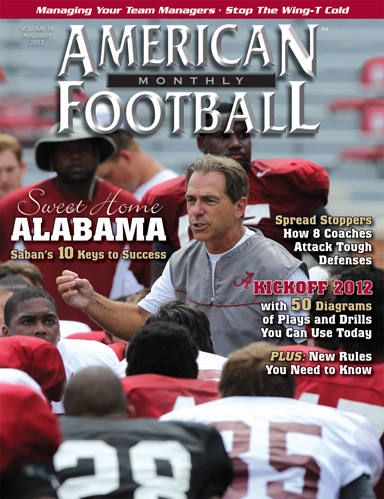Article CategoriesAFM Magazine
|
EXTENSION PLANTS The Key to Football Speed Transitionby: Dale BaskettFootball Speed Specialist © More from this issue All movement requires force application but transition speed is what makes plays happen fast. The key to playing the game fast is due in part to the ability to plant well when directionally displacing momentum. Pure speed lineally is useful in smaller dimensions than we think when evaluating speed traits. The forty-yard dash as a measurement that forecasts speed is the wrong tool. Playing speed should not rely on the forty as a pure indication for playing fast. The game is played on your feet with the upper and lower body working together. This is the real test. What we do know is that football requires fast multiple movements to be effective. We must rely on ground force, strike placement and power collectively to be speed efficient during specific movement transitions. We will discuss and analyze effective ways and reasons ....The full article can only be seen by subscribers.
|
|
|||||||
| HOME |
MAGAZINE |
SUBSCRIBE | ONLINE COLUMNISTS | COACHING VIDEOS |
Copyright 2025, AmericanFootballMonthly.com
All Rights Reserved





